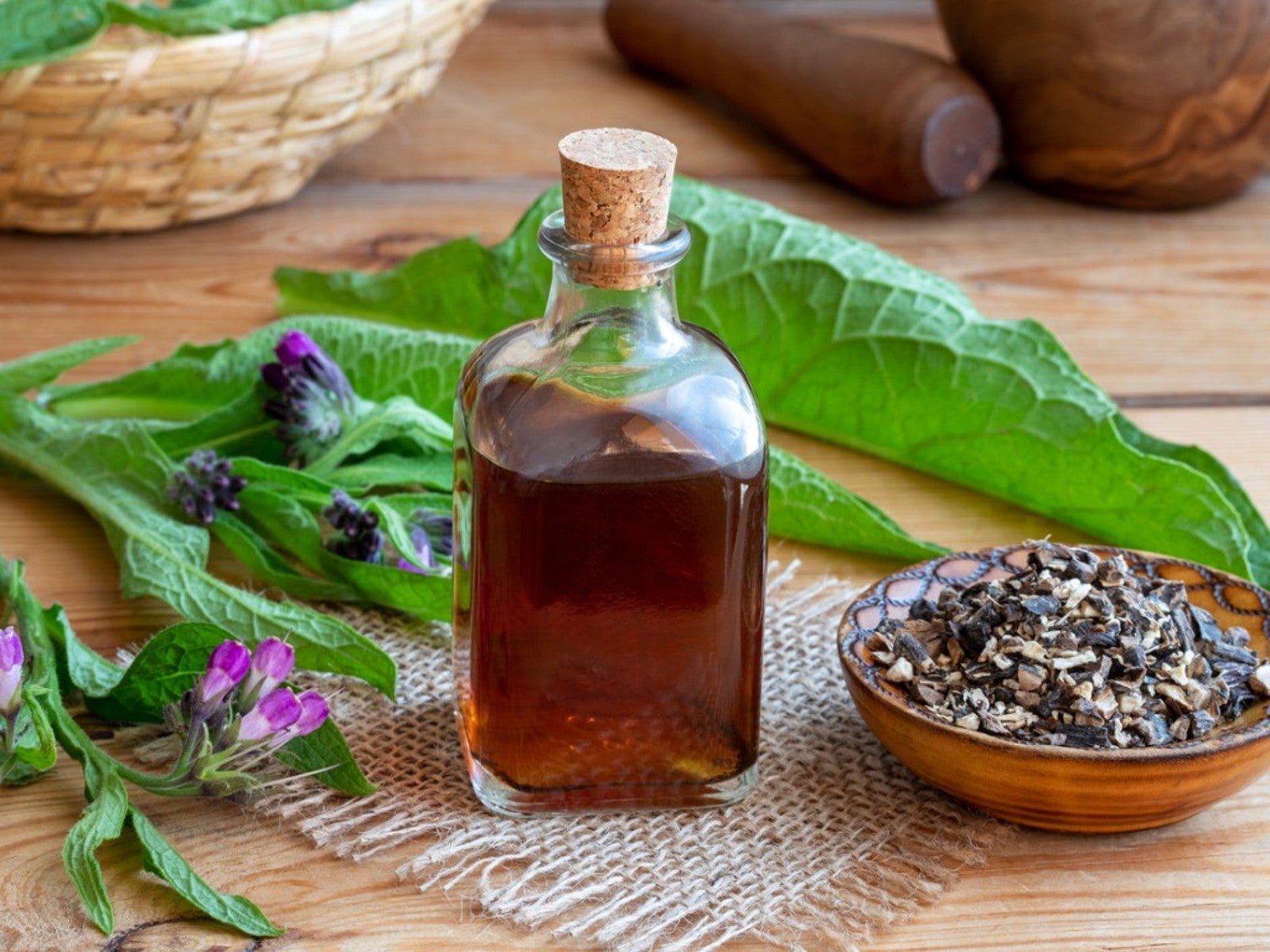Comfrey Oil Infusion: How To Make Comfrey Oil For Herbal Remedies


Comfrey is a perennial herb that can grow in USDA zones 3-9. This cold tolerant plant has a long history of use as an herbal in cooking, but also as a medicinal. It is a large plant with huge leaves, useful for green composting. Comfrey benefits span a wide range.
Ancient herbal remedies have made a comeback in recent years. This easy to grow herb is tolerant of many soil situations, but prefers deep, loose soil. Once the plant is established, it can be cut back several times during the growing season, either to mulch the leaves, or make a comfrey oil infusion. What can comfrey oil be used for?
Comfrey Oil Benefits
A comfrey oil infusion is a very common natural medical preparation. The plant has high levels of allantoin and rosmarinic acid. The first stimulates skin cell production, while the latter relieves swelling and pain. The plant was once taken internally for stomach upset, ulcer, and colitis, but this is generally considered unsafe today.
What can comfrey oil be used for? Allantoin is often found in items such as deodorant and skin care products. With a homemade comfrey oil recipe, you can naturally benefit from this amazing plant's properties and healing abilities.
How to Use Comfrey Oil
A comfrey oil infusion is the most common way to harvest the plant's benefits. The common comfrey, Symphytum officinale, is the variety once called knitbone. It may be used to treat sprains, inflammation, burns, and bruises. To make comfrey preparations, you may use the leaves or the root. Harvest the root in winter if possible. The leaves may be taken from the plant at any time, preferably in the morning. It is best to grind the root and leaves and dry them. Dried herbs will reduce the chance of bacterial growth. Then you can make a comfrey oil which can be turned into a cream or salve if you prefer.
Comfrey Oil Recipe
Take the ground, dried root or leaves and place them in a jar, about 2/3 full. Fill the jar with a neutral oil and place a lid on the container. Leave the jar in a warm location for 4-6 weeks. Move the herbs around in the oil daily. At the end of the time, strain out the herbs and use the oil topically.
Alternately, you can use fresh herbs or roots in a heat method. Chop the leaves and grate the root. Place the plant material in a pot just covered in oil. You can add essential oils or aromatic herbs at this time if you wish. Heat the oil over medium low heat for half an hour. Strain out the herbs and bottle up the oil. If you want to solidify the mixture, add organic beeswax and allow it to cool. Rub on cuts, burns, bruises, or sore muscles.
Sign up for the Gardening Know How newsletter today and receive a free copy of our e-book "How to Grow Delicious Tomatoes".

Bonnie Grant is a professional landscaper with a Certification in Urban Gardening. She has been gardening and writing for 15 years. A former professional chef, she has a passion for edible landscaping.